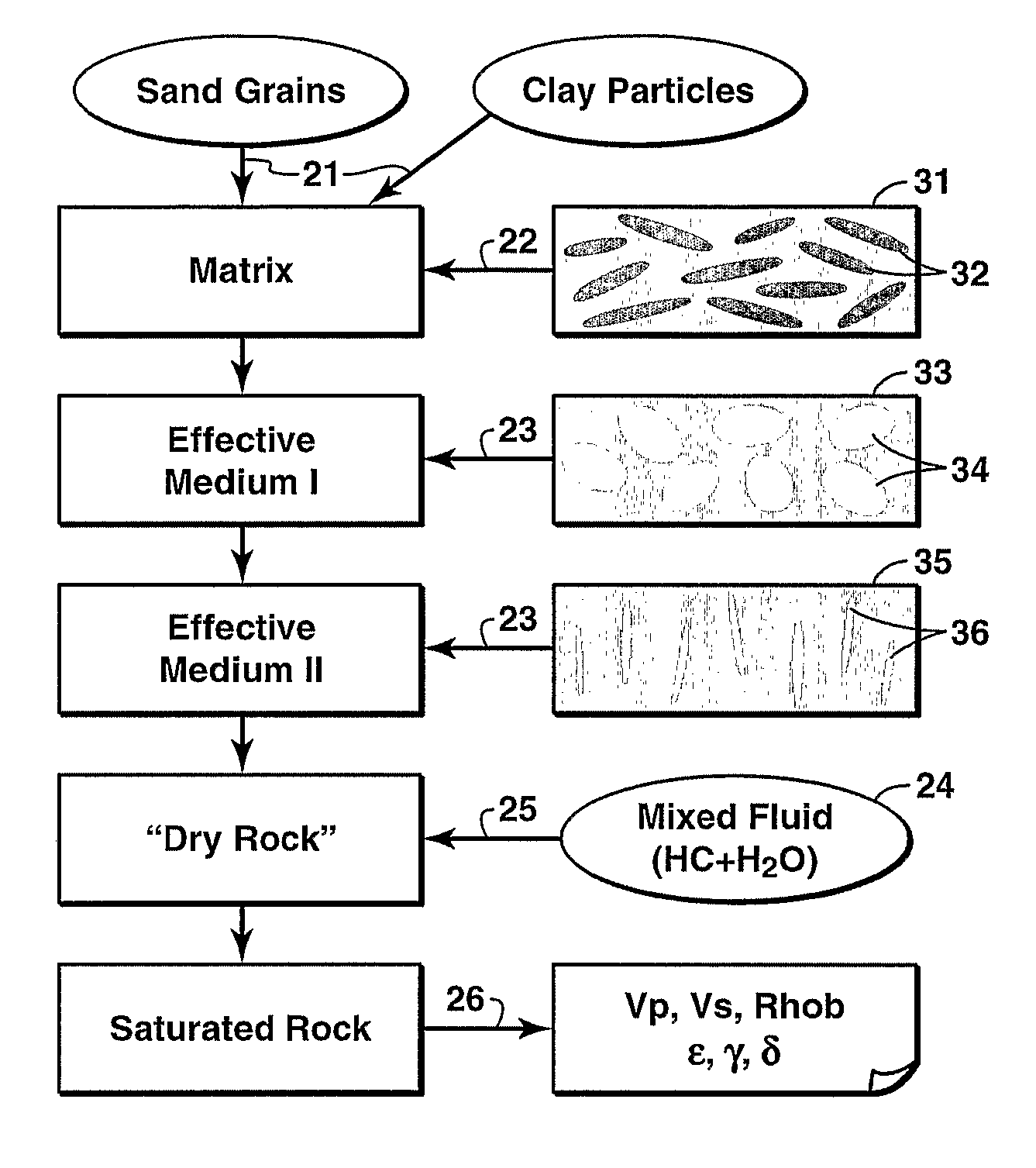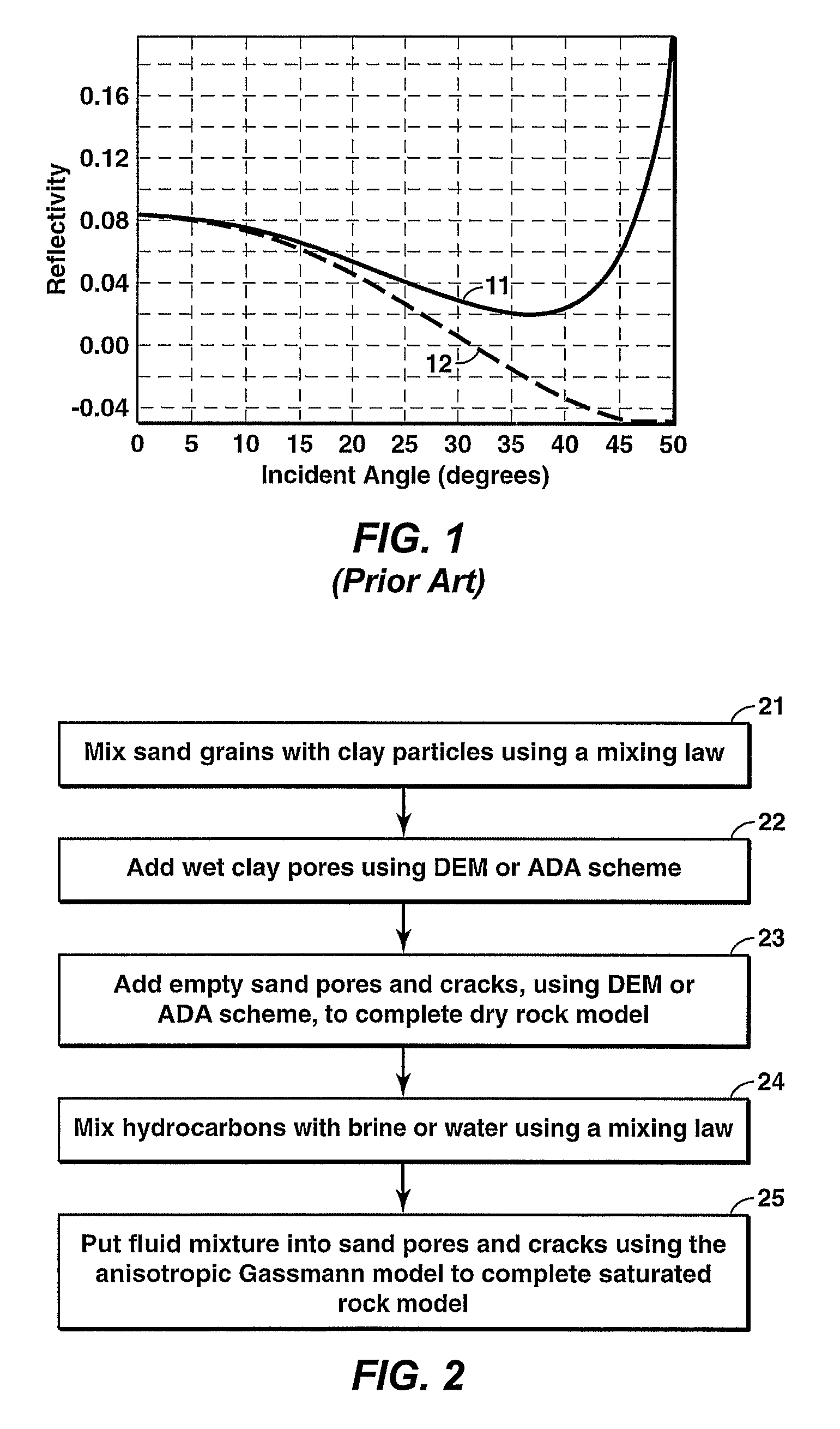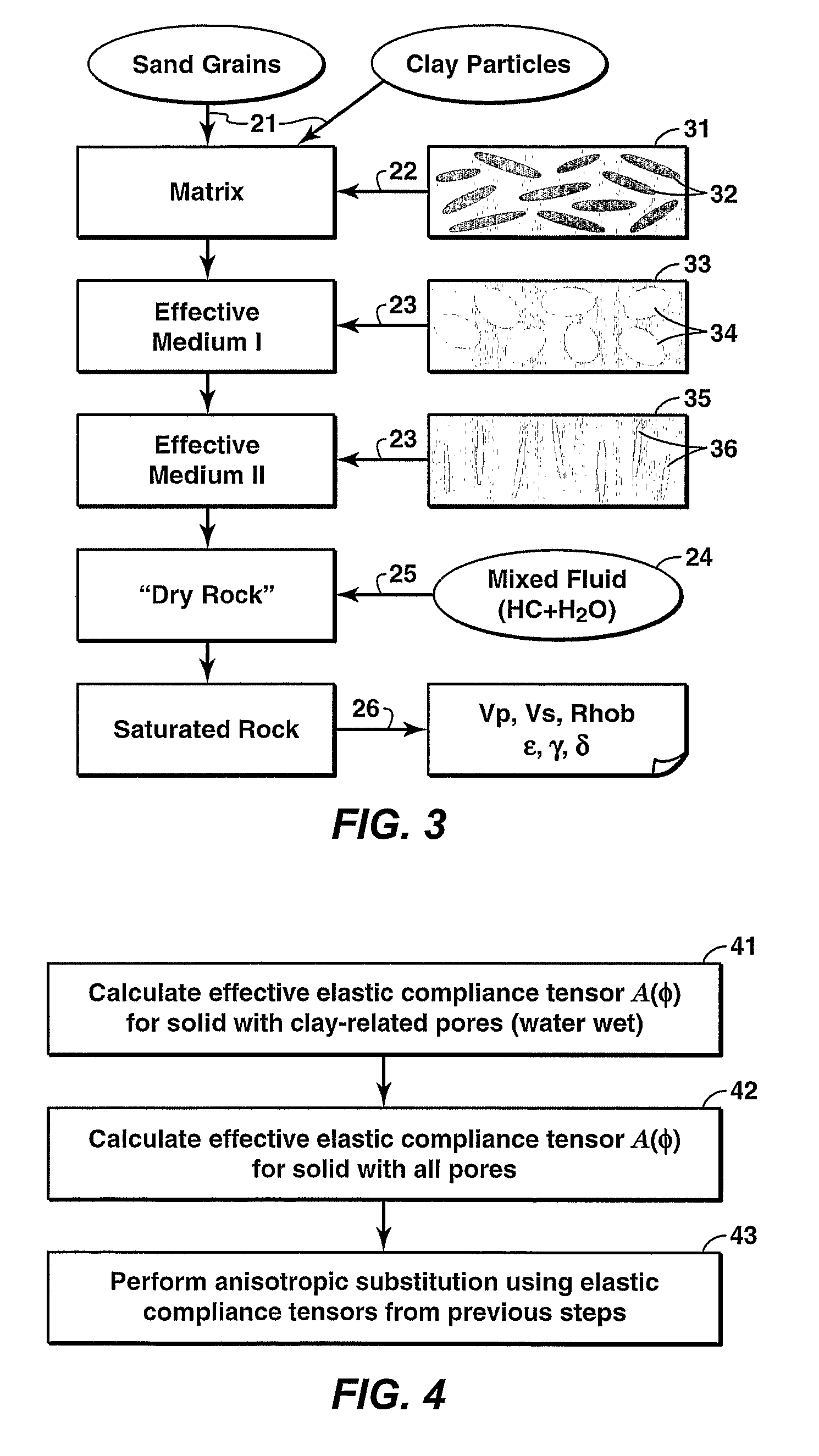Integrated anisotropic rock physics model
a rock physics model and anisotropy technology, applied in the field of geological prospecting, can solve the problems of stress-induced anisotropy being more difficult to predict, differentiating the closure of soft pore or crack in the rock, and first-order theories of little practical us
- Summary
- Abstract
- Description
- Claims
- Application Information
AI Technical Summary
Benefits of technology
Problems solved by technology
Method used
Image
Examples
examples
[0045]The present inventive method was applied to log analysis and seismic modeling, and significant improvements were observed in S-wave prediction and well-to-seismic gather tie. FIGS. 5B-E compare the measured (darker curve) S-wave 52 (FIG. 5B) and density 54 (FIG. 5C) logs with the calculated (53, 55) using the traditional isotropic rock physics model. A consistent bias can be observed between the measured and the calculated over the sand intervals 51, corresponding to low values of Vsh, the shale volume fraction, which is shown as a function of depth in FIG. 5A. This was interpreted as the effect of stress-induced anisotropy in unconsolidated sands. FIGS. 5D (S-wave) and 5E (density) show that the present inventive method dramatically improves agreement between the calculated results 57, 59 and the measured data 52, 54 in the sand intervals 51.
[0046]In more detail, shear-wave and density logs can be predicted from the P-wave log (not shown) and the shale volume (shown in FIG. 5...
PUM
 Login to View More
Login to View More Abstract
Description
Claims
Application Information
 Login to View More
Login to View More - R&D
- Intellectual Property
- Life Sciences
- Materials
- Tech Scout
- Unparalleled Data Quality
- Higher Quality Content
- 60% Fewer Hallucinations
Browse by: Latest US Patents, China's latest patents, Technical Efficacy Thesaurus, Application Domain, Technology Topic, Popular Technical Reports.
© 2025 PatSnap. All rights reserved.Legal|Privacy policy|Modern Slavery Act Transparency Statement|Sitemap|About US| Contact US: help@patsnap.com



